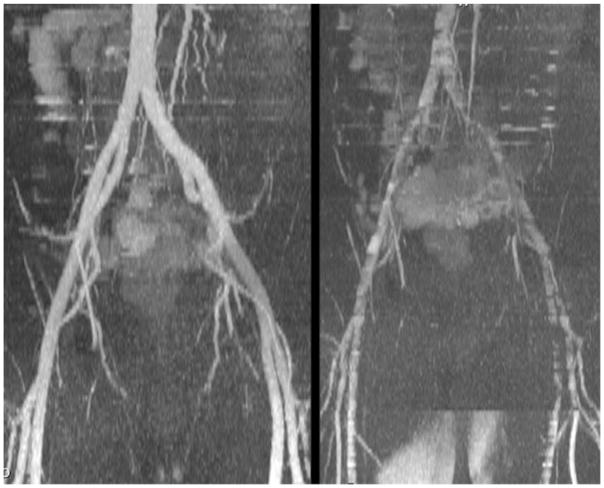FIG. 4.
Comparison of QISS MRA acquired in the pelvis with ECG gating and a time delay of 100 ms (left) versus pulse gating and a time delay of 0 (right). Note the dramatic worsening in image quality with pulse gating because the QI for inflow mainly overlaps the period of slow and/or reversed diastolic flow, whereas with ECG gating the QI mainly overlaps rapid forward systolic flow.

